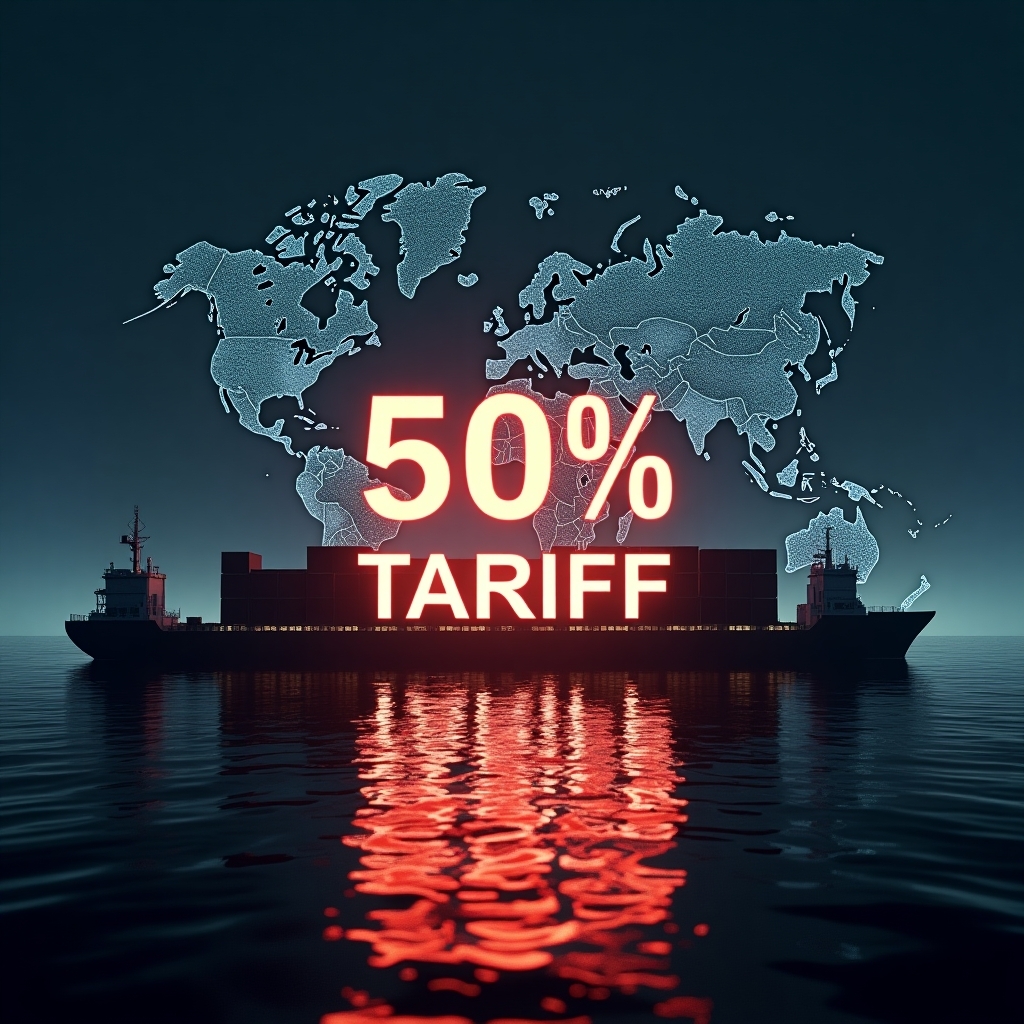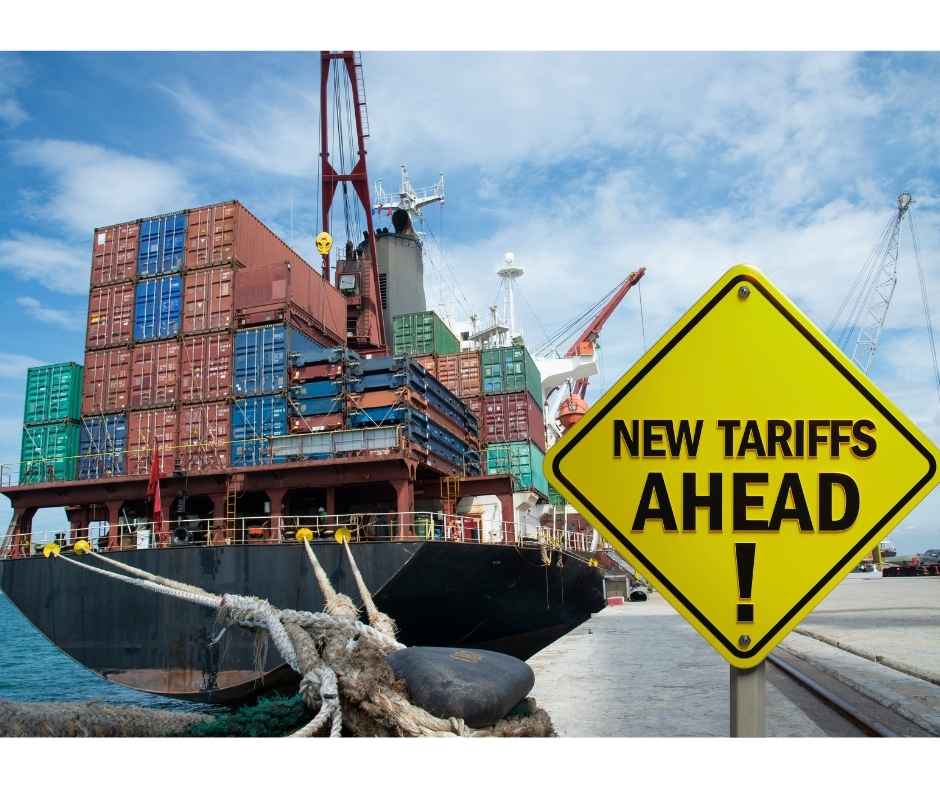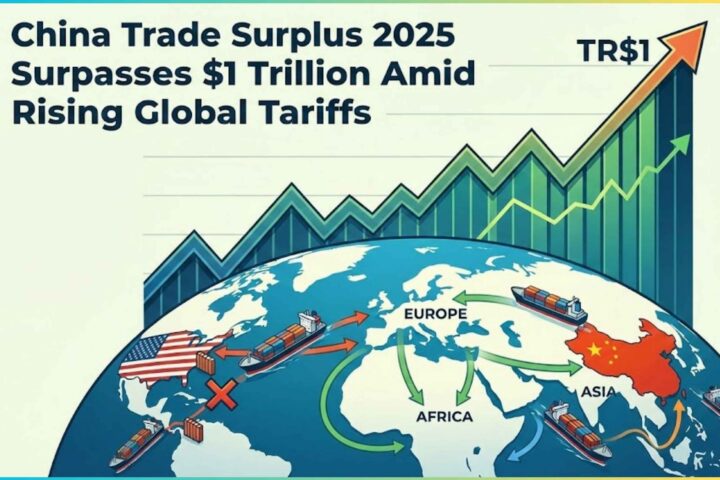Why BRICS Is Turning the Tech Table in 2025
In a bold geopolitical move, BRICS nations—Brazil, Russia, India, China, and South Africa—have imposed a 50% tariff on high-value Western tech imports, targeting semiconductors, AI chips, and cloud infrastructure hardware. The announcement has shocked markets and triggered a global tech disruption that’s rewriting the rules of international trade in 2025.
This massive step isn’t just about economics. It’s a strategic maneuver by BRICS to weaken Western tech dominance and build independent digital ecosystems. But what does it mean for global supply chains, Western companies, and the future of innovation?
🚨 What Sparked the BRICS 50% Tariff in 2025?
At the recent BRICS summit, the coalition accused Western nations of creating “algorithmic colonialism” through monopolized access to advanced AI technologies. As a response, the 50% tariff rule was introduced, effective immediately across member nations.
The goal?
- Push domestic growth in AI and semiconductors
- Reduce tech dependency on the US and EU
- Establish BRICS as a standalone innovation bloc
Western nations, including the United States, UK, and Germany, have already responded with concerns filed at the WTO.
📉 Global Tech Disruption: Immediate Market Impact
The immediate fallout from the BRICS 50% tariff 2025 was dramatic:
- NASDAQ tech index dropped by 2.5%
- NVIDIA and AMD stocks fell
- Major cloud infrastructure providers paused shipments to BRICS countries
- AI startups in the West are now facing blocked access to BRICS’ billion-user markets
Supply chains are seeing a reroute. China and India are ramping up domestic chip production, while Brazil is incentivizing open-source hardware R&D.
💥 Why This Tariff Breaks the Rules
What makes the BRICS tech tariff so disruptive?
- Unilateral Execution: No prior trade negotiation or consultation with global bodies.
- Blanket Enforcement: Targets all non-BRICS companies dealing in AI, cloud, chips, and even encrypted devices.
- Strategic Timing: Aligns with a weakening Western chip supply chain post-pandemic and AI energy demand surge.
This breaks traditional WTO norms, especially those that support gradualist, bilateral tariff agreements.
🔧 Tech Industries Affected by the 50% BRICS Tariff
Most affected sectors:
- Semiconductors and AI chips
- Data center equipment
- IoT and smart device supply
- SaaS providers dependent on BRICS user data
- Cloud gaming, metaverse, and blockchain systems
For example, Intel’s $1B investment in India may now face regulatory delays, while Google Cloud services are being replaced by BRICS-native platforms like BaikalNet and BharatCompute.
🌎 What This Means for the Future of Global Tech
This isn’t just a tariff it’s a tectonic shift in tech geopolitics. Here’s what’s coming:
🧭 1. Rise of Parallel Tech Stacks
BRICS is now fast-tracking its own operating systems, AI frameworks, and quantum initiatives.
📡 2. Western Firms Forced to Rethink Asia Strategy
Companies may need to create BRICS-specific subsidiaries or risk total market exclusion.
🔗 3. Increased Decentralization
Expect more investment in open-source AI and decentralized data governance.
🏗️ 4. Supply Chain Rewiring
India and China will push more private-sector manufacturing to local hubs—disrupting current partnerships with Taiwan, South Korea, and the EU.
🧠 Expert Opinion: “Tech Sovereignty Has a New Flag”
According to Dr. Lin Zhou, a policy analyst at the Global Digital Policy Institute:
“This is BRICS signaling a new kind of power—one not just driven by natural resources, but by algorithmic influence and processor independence. The West needs to evolve quickly.”
Q1: Which countries are in BRICS now?
A1: Original members include Brazil, Russia, India, China, and South Africa. Recent additions (making “BRICS+”) include Egypt, Iran, Indonesia, UAE, and Ethiopia.
TradeimexQ2: How long could U.S. markets remain volatile?
A2: While short-term volatility persists, analysts expect stabilization by Q4—depending on Fed direction, consumer resilience, and trade developments.
Financial TimesReutersQ3: Will this tariff spark a trade war?
A3: The risk is significant. U.S. tariff escalation could push BRICS closer, increasing intra-bloc trade and de-dollarized payment systems.
ReutersAInvestQ4: What sectors are best positioned to win?
A4: Commodity and defence sectors (like mining and rare metals) may benefit. Investors may also hedge with safe-haven assets like gold and U.S. Treasuries.
Is Your Business Ready?
If you’re a startup or tech business operating globally, it’s time to diversify your markets and build BRICS-specific compliance frameworks. This isn’t just a trade war—it’s the start of a new digital cold war. And 2025 may be the year BRICS breaks the Western tech monopoly for good.
🔗 Related Articles:







